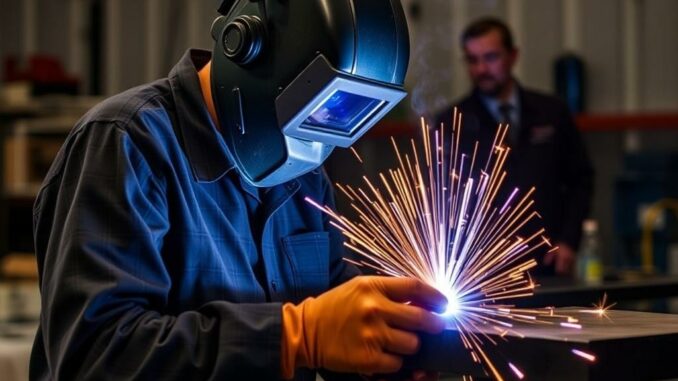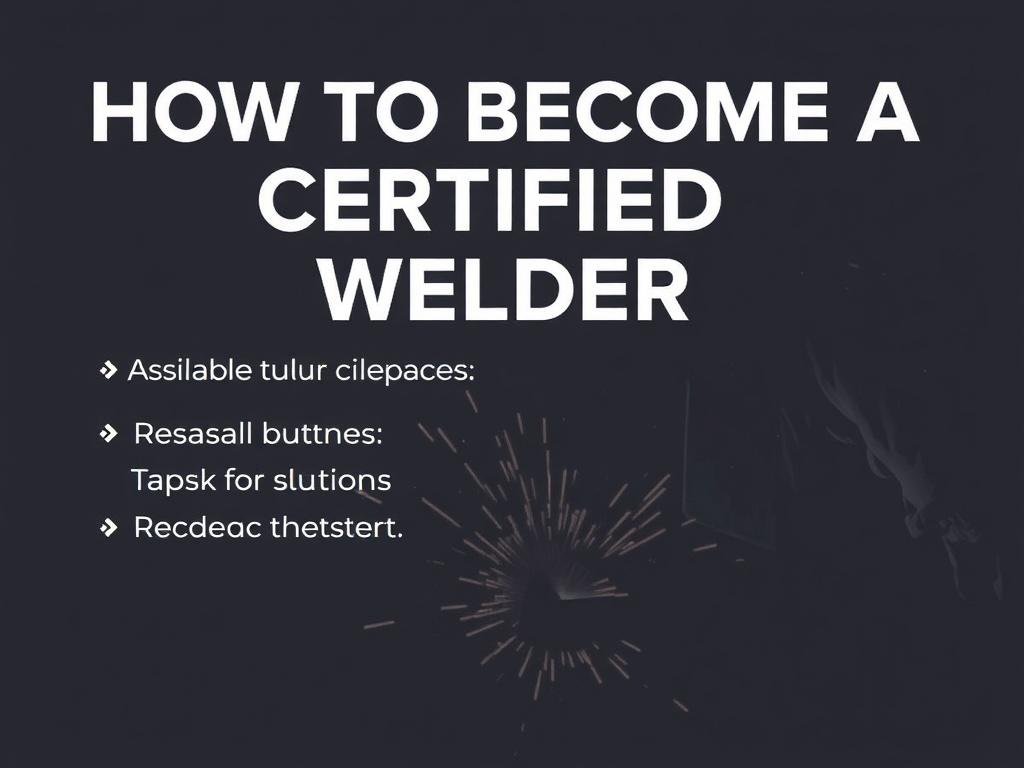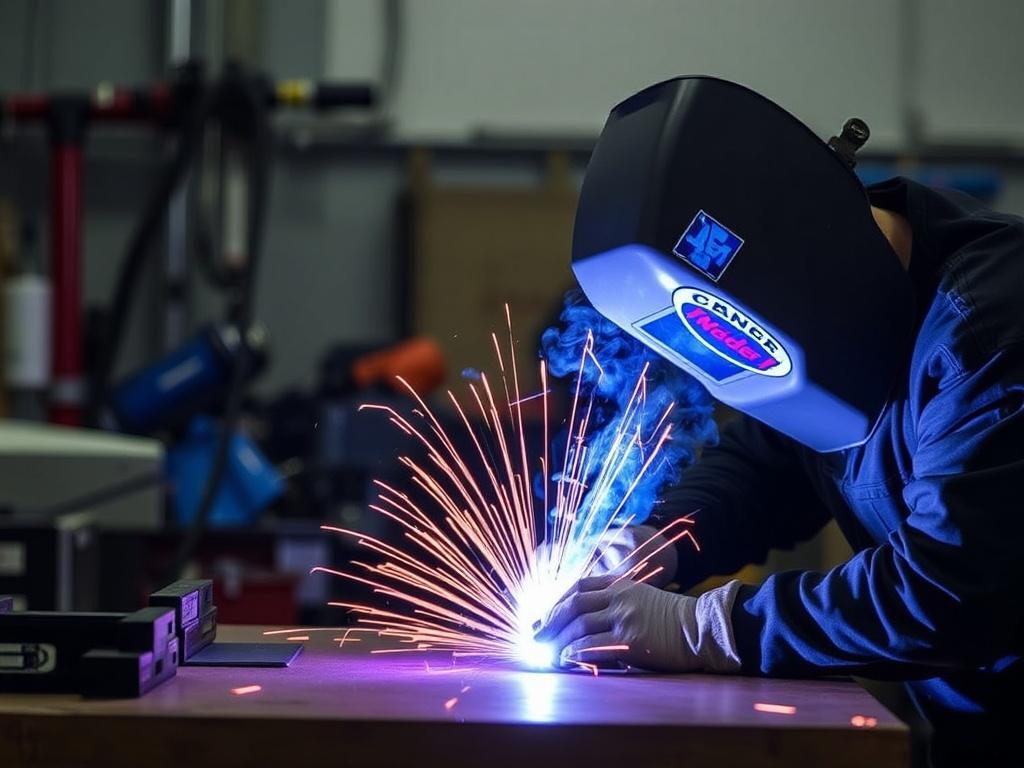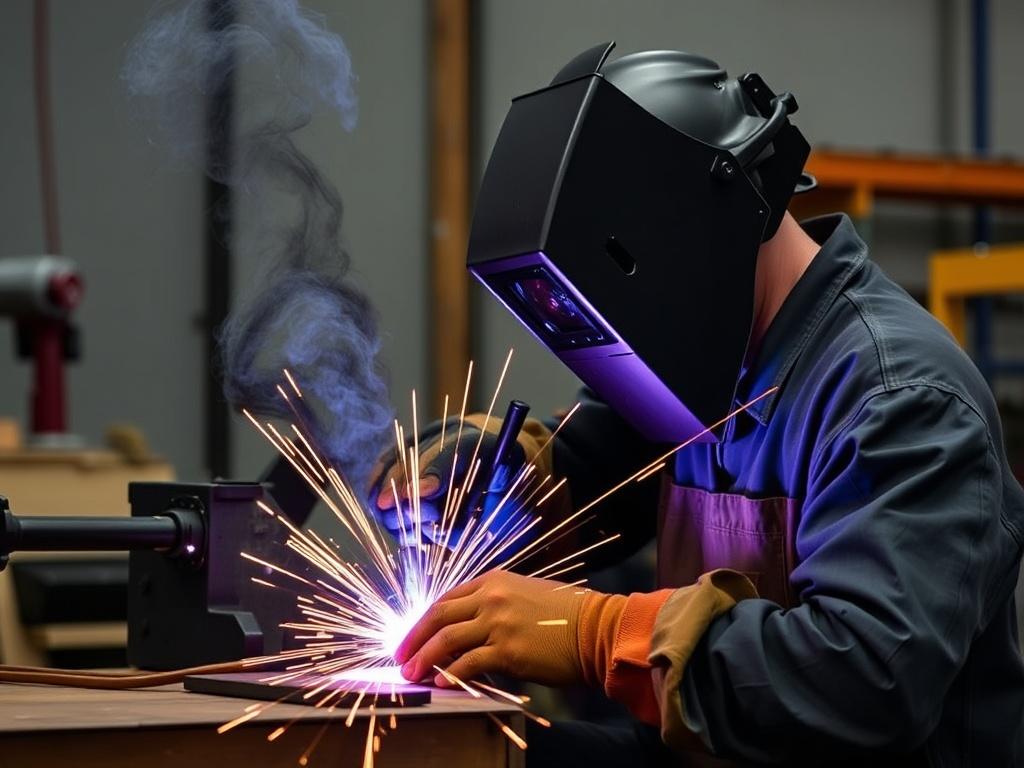
Becoming a certified welder is a rewarding career choice that offers stability, good pay, and the satisfaction of working with your hands to create strong, lasting structures. If you’ve ever admired the craftsmanship behind bridges, skyscrapers, or even classic cars, welding plays a vital role in these projects. But how exactly do you become a certified welder? What does it take, and what are the steps and requirements necessary to achieve certification?
In this comprehensive guide, we’ll walk you through everything you need to know about how to become a certified welder. From understanding the importance of certification, exploring the different types of welding certifications, to preparing for the certification exams and maintaining your credentials, this article will cover all the essential steps you need to take to turn your welding skills into a recognized qualification.
What is Welding Certification and Why Is It Important?

Before diving into the process of how to become a certified welder, let’s first understand what welding certification actually means. Welding certification is an official recognition that a welder has met specific standards of skill, knowledge, and ability to perform welding tasks safely and effectively. It usually involves passing written tests and practical exams demonstrating your welding techniques across various processes, materials, and positions.
But why is certification important? Simply put, it validates your qualifications in the eyes of employers and regulatory agencies. The construction, manufacturing, and engineering industries rely heavily on certified welders to ensure that projects meet strict safety and quality standards. Without proper certification, your job opportunities may be limited, and you could miss out on better-paying jobs or advanced career roles.
Benefits of Being a Certified Welder
- Higher wages: Certified welders typically command higher salaries than non-certified welders.
- Better job prospects: Many employers require certification before hiring for welding positions.
- Career advancement: Certification opens doors to supervisory and specialized welding roles.
- Increased confidence: Knowing you’ve met industry standards increases your professional pride and effectiveness.
- Compliance with code requirements: Many construction and manufacturing projects require adherence to American Welding Society (AWS) or other standards.
Types of Welding Certifications
When thinking about how to become a certified welder, it’s important to realize that welding certification is not a one-size-fits-all designation. Various organizations offer certifications tailored to different welding processes, materials, and industries. Knowing which certification suits your career goals is an essential first step.
Major Welding Certification Bodies
| Certification Body | Description | Relevant Certifications |
|---|---|---|
| American Welding Society (AWS) | One of the most recognized organizations worldwide, providing numerous welding certifications based on processes and materials. |
|
| American Society of Mechanical Engineers (ASME) | Focuses on boiler and pressure vessel certifications, heavily used in the energy and manufacturing sectors. |
|
| Canadian Welding Bureau (CWB) | Offers certifications recognized throughout Canada and internationally. |
|
Common Welding Certification Types
Depending on your career path, you may choose to pursue one or more of the following certifications:
- Certified Welder (CW): Validates your ability to perform welding tasks correctly using one or more welding processes such as Shielded Metal Arc Welding (SMAW), Gas Tungsten Arc Welding (GTAW), or Gas Metal Arc Welding (GMAW).
- Certified Welding Inspector (CWI): Ideal for experienced welders who want to move into quality control and inspection, ensuring projects comply with welding codes.
- Certified Welding Educator (CWE): For welders who want to teach welding techniques and safety to others in vocational or technical schools.
- Certified Welding Supervisor (CWS): Focuses on leadership responsibilities overseeing welding projects and personnel.
Step 1: Gain Basic Welding Skills and Education
Becoming a certified welder starts with mastering the fundamental skills. If you’re completely new to welding, it’s crucial to get proper training before you attempt certification tests. Many community colleges, vocational schools, and technical institutes offer welding diploma or certificate programs that teach the basics of welding techniques, safety procedures, metallurgy, and blueprint reading.
During your training, you will learn about different welding processes, such as:
- Shielded Metal Arc Welding (SMAW)
- Gas Metal Arc Welding (GMAW or MIG Welding)
- Gas Tungsten Arc Welding (GTAW or TIG Welding)
- Flux-Cored Arc Welding (FCAW)
- Submerged Arc Welding (SAW)
Hands-on experience is critical. Welding is a skill that gets better the more you practice. If you can, try to get an apprenticeship or entry-level welding position to gain real-world expertise.
Typical Welding Program Curriculum
| Course Component | Overview |
|---|---|
| Welding Fundamentals | Basic welding techniques, introduction to welding tools and machines, and safety rules. |
| Welding Processes | In-depth study of SMAW, MIG, TIG, FCAW, and SAW processes, including their applications and advantages. |
| Blueprint Reading | How to interpret welding and fabrication blueprints and symbols. |
| Metallurgy | Understanding metals and their properties, heat treatment, and how they affect weld quality. |
| Safety Training | Proper handling of welding equipment, protective gear, and workplace safety protocols. |
Step 2: Choose Your Desired Welding Certification

With basic skills under your belt, the next step in how to become a certified welder is to select the right certification that aligns with your career goals. Consider the industry you want to work in and the specific welding process you’d like to specialize in. For example, structural welders often pursue AWS Certified Welder credentials, while those in pressure vessel manufacturing likely focus on ASME certifications.
In many cases, your employer or the company you want to work for will specify the type of welding certification required. If you’re still undecided, it’s a good idea to consult with welding instructors or industry professionals to help navigate your options.
Considerations When Choosing Certification
- Industry requirements: Some fields require specialized certifications (e.g., oil and gas industry standards).
- Material types: Certifications may vary based on the metals you will weld, such as stainless steel, aluminum, or carbon steel.
- Welding processes: Pick certifications involving the processes you are most proficient in or interested in mastering.
- Geographical location: Certification standards may vary by country or state.
- Certification renewal policies: Some certifications expire and require periodic renewal.
Step 3: Prepare for the Welding Certification Test
Once you’ve chosen your certification, the most important part of how to become a certified welder is preparing for the certification test. This involves studying welding theory, honing your welding practice, and familiarizing yourself with the certification exam format.
Certification exams typically include both written and practical components:
- Written Test: Assesses your knowledge of welding safety, procedures, metallurgy, and blueprint reading.
- Practical Test: Tests your ability to execute welding tasks based on specific procedures, positions, and materials.
To prepare effectively:
- Review the welding codes and standards relevant to your certification (e.g., AWS D1.1 for structural welding).
- Practice welding samples in different positions (flat, horizontal, vertical, overhead).
- Attend refresher classes or workshops if needed.
- Use study guides and sample tests available from certification bodies.
- Get feedback from experienced welders or instructors on your practice welds.
Tips for Success on Your Welding Certification Exam
- Understand the Procedure Specification (WPS): Your welds must conform to the exact parameters laid out in the WPS. Pay close attention to preheat temperatures, amperage, travel speed, electrode type, and shielding gases.
- Practice Weld Beads: Focus on producing consistent, clean weld beads with proper penetration and minimal defects.
- Master Welding Positions: Many certification exams require welding in multiple positions such as flat (1G), horizontal (2G), vertical (3G), and overhead (4G).
- Maintain Safety: Wear proper personal protective equipment (PPE) and follow all safety protocols during your testing.
- Time Management: Plan your work to complete your welds within the allotted test time without rushing.
Step 4: Take and Pass the Welding Certification Exam
Now, the moment you’ve been working towards – taking the welding certification exam. Testing is typically conducted by authorized welding testing centers or through your training institution if they are AWS accredited or affiliated with other governing bodies.
The practical exam requires you to weld steel test coupons (test pieces) following precise guidelines. These coupons will be inspected for quality, including checks for porosity, cracks, weld size, and overall fusion.
The written portion may be administered before or after the practical test and usually involves multiple-choice questions about welding safety, procedures, and standards.
What to Expect During the Certification Exam
| Exam Component | Description | Typical Duration |
|---|---|---|
| Written Test | Multiple-choice or short answer questions related to welding knowledge and safety. | 1-2 hours |
| Practical Test | Hands-on welding on test coupons according to procedure specifications. | 2-4 hours |
| Visual and NDT Inspection | Test coupons are inspected via visual, radiographic, ultrasonic, or other non-destructive testing methods. | Varies; generally within a week for results |
After the Test: Receiving Your Results
Certification results might be available immediately after testing or within a few days depending on whether the inspection involves non-destructive testing (NDT) methods. Successful candidates will be issued a certificate valid for a defined period, often three to five years.
If you don’t pass the exam on your first try, don’t be discouraged. Many welders require more than one attempt to master the craft to certification standards. Use feedback from your test results to improve your skills and try again.
Step 5: Maintain and Renew Your Welding Certification
Becoming a certified welder is not a one-and-done milestone. Like many technical professions, your welding certification will need to be maintained and renewed periodically to ensure your skills remain current with industry standards and technology advancements.
Most welding certifications must be renewed every few years. Renewal typically involves:
- Submitting proof of welding work experience or continued education.
- Sometimes retaking a written or practical test.
- Paying renewal fees.
Some certification bodies, like AWS, provide recertification options where welders maintain credentials by periodically performing production welding under a qualified supervisor rather than retesting.
Tips for Keeping Your Certification Current
- Keep detailed records: Document your welding hours, projects, and training sessions.
- Stay informed: Regularly update your knowledge of welding codes and new welding technology.
- Take continuing education courses: Expansion of your skills can improve your employability and help meet recertification requirements.
- Network within the welding community: Join welding associations and attend industry events to stay connected and informed.
Additional Resources and Tips for Aspiring Certified Welders
Alongside formal training and certification, there are lots of ways to make your journey smoother and more effective.
Helpful Resources
- American Welding Society Certification Programs
- ASME Boiler and Pressure Vessel Code
- Canadian Welding Bureau (CWB)
- Occupational Safety and Health Administration (OSHA) Safety Guidelines
Practical Tips for Welding Success
- Invest in quality PPE: Proper helmets, gloves, and protective clothing make welding safer and more comfortable.
- Master weld preparation: Cleaning and fit-up before welding impact weld quality significantly.
- Ask for mentorship: Experienced welders can provide invaluable tips and advice.
- Always prioritize safety: Welding involves hazards like fumes, UV radiation, and burns. Stay alert and follow protocols.
Conclusion: Your Path to Becoming a Certified Welder

Understanding how to become a certified welder involves more than just learning how to join metals together. It requires a commitment to building your skillset, understanding industry standards, and demonstrating your ability through recognized certification exams. Welding certification not only opens up greater career opportunities but also proves your dedication to quality and safety in this essential trade.
If you’re passionate about working in a hands-on, high-demand profession, following the outlined steps – from gaining skills through education and training, choosing and preparing for the right certification, to maintaining your credentials throughout your career – will guide you toward success as a certified welder. Remember, every great welder started where you are right now, and with perseverance and the right preparation, your welding certification is within reach.
So gear up, light your torch, and start forging your future in the world of certified welding!
